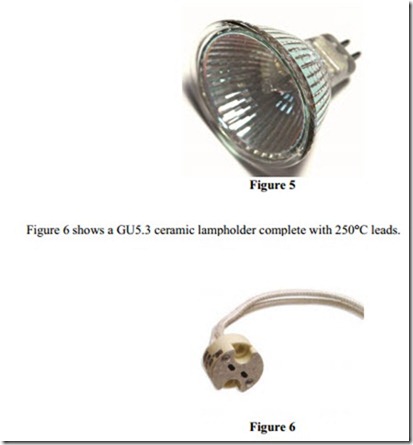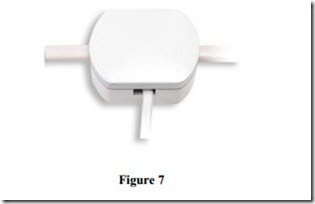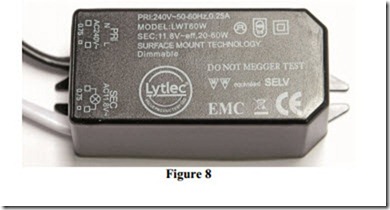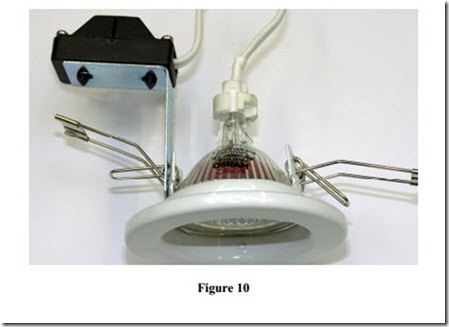Extra Low Voltage Lighting
Extra low voltage lighting can be attractive, effective, economical and reliable when installed correctly. When not installed correctly it can be extremely dangerous.
The components which make up an extra low voltage lighting installation are as follows:
· The lamp
· The luminaire
· The transformer
· The wiring layout
· The circuit controller
These are packaged and sold as Low Voltage items which is of course wrong. In these notes we use the correct term Extra Low Voltage.
Extra Low Voltage Lamps
Extra low voltage lamps are available in power ratings between 1 and 100 Watts. They are operated at 12 Volts.
The handling and principle of operation of the extra low voltage tungsten halogen type, is similar to that of the linear type.
These lamps have either an aluminium or a dichroic reflector. The dichroic reflector is produced by multi-layering reflective coatings onto the glass. Up to 22 separate coatings are used. Their cumulative effect is to reflect light while allowing two thirds of the heat produced, pass through. This means that only one third of the heat is radiated along the light beam onto the area being illuminated. Articles in this area are thus subjected to less heat.
These lamps have a life expectancy of 3000 Hours and are available in ratings of 20, 35 and 50 Watts. They are used for general domestic lighting and display lighting.
Figure 5 shows a 50 Watt dichroic lamp. Cap type is usually GU5.3. These lamps are now available in square and octagonal format.
Figure 7 shows a joint box to accommodate the supply cable to a lighting point, loop cable to next lighting point and feed to luminaire. It features push-in connectors for fast, reliable connections.
Extra Low Voltage Supply
An electromagnetic transformer may be used to provide the 12 Volt supply. This has been replaced by a unit often referred to as an electronic transformer. The more correct term is a converter as the 230 Volt mains supply is converted to 12 Volts electronically. This transformer / converter must be selected to suit the lamp load.
Figure 8 shows a converter suitable for a load between 20 and 60 Watts. Note the information and symbols on this converter.
Installation of Extra Low Voltage Lighting
Luminaires and converters must be installed in a safe manner. They must be suitable for the material in / on which they are being installed. Any units suitable for mounting in flammable material such as wood, will be marked with the symbol in Figure 9.
A / or an X through the letter F means that the luminaire is not suitable for mounting in flammable material, as it will constitute a fire hazard. The converter must be positioned at least 250mm away from the luminaire. Any thermal insulation must be removed from around the luminaire and converter for a distance of at least 50 mm. The converter must be matched to the lighting load. Correct size cable must be used. Remember that the current drawn by a 12 Volt lamp will be almost 20 times higher than that of a 230 Volt lamp of the same wattage. Overloading may start a fire or simply damage the surroundings
A suitable opening has to be made in the ceiling material. Use a holesaw of the correct diameter. The supply cable is installed and dropped through this opening. The luminaire is connected to the converter and the supply cable is then connected to the converter. The whole arrangement is then passed through the opening in the ceiling. The two spring loaded clamps on the luminaire are used to hold it in position in the ceiling.
Figure 10 shows an extra low voltage recessed luminaire complete with lamp.




